If you have ever been inclined to dig deep into the history of a long-forgotten attraction, or a piece of Disney concept art that was never realized, you have probably come across the YouTube channel Defunctland. Created by Kevin Perjurer, the channel has become exponentially popular over the years, now a household name in the Disney and theme park communities thanks to the channel’s high quality and heavily researched segments. But now, Perjurer is lending his efforts to a new format: a feature length documentary. “Live from the Space Stage: A Halyx Story” is a captivating original documentary that unveils the never-before-heard history, growth and abrupt end of Halyx, a bizarre rock band that played on Disneyland’s Space Mountain Stage for one brief summer in 1981.

Picture Star Wars meets Kiss, set in front of the backdrop of the legendary Space Mountain and featuring trained musicians, vocalists and gymnasts. Yes, the story is just as wild as the concept sounds. A truly wild ride, the documentary features interviews with Disney executives, record producers, Emmy and Grammy winning composers, and of course, members of Halyx themselves. If you are a big Disney fan and have not heard of Halyx before, don’t be ashamed, this is truly a niche story that will no doubt be suddenly flung into public knowledge thanks to this documentary, and the world will be better for it.
I got the opportunity to view an early release of the film, and thoroughly enjoyed it. It is beautifully produced, shot and edited, and will keep you hooked the entire time as you dive deeper and deeper into the band’s mythos and see Halyx perform live in all their glory thanks to archive footage shot that one fateful summer. It is one of the crazier behind-the-scenes stories I’ve heard from the theme park world, and there is plenty of charm to have you emotionally invested as the story goes along, and by the time it reaches the end, you will feel like you too have been on the wild ride that is Halyx.
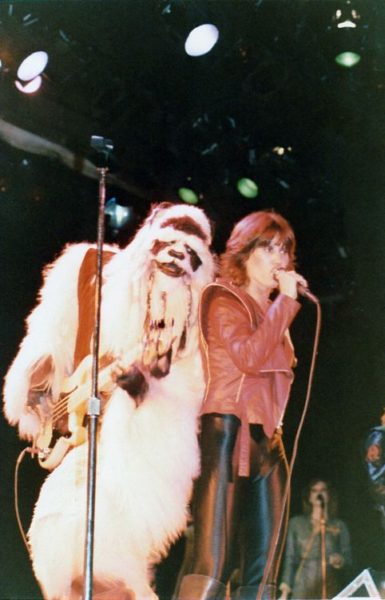
I had a chance to speak to the film’s producer and creator of Defunctland, Kevin Perjurer. Here is what he had to say about Defunctland, the documentary, and Halyx itself.
Hi Kevin, and thanks for speaking with us! Can you talk a little bit about who you are and what Defunctland is for anyone who may not be familiar?
My name is Kevin Perjurer and I have a YouTube channel called Defunctland. Defunctland was a channel that focused on theme park rides, attractions, shows and entire parks that were defunct, abandoned, cancelled, anything of that nature, so either it didn’t happen or it was no longer there. We’ve expanded since then to do full fledged documentaries, so now the episodes are much longer and they’re much more produced than the earlier episodes. We also have a spinoff series called DefunctTV, but with Defunctland itself, it’s a YouTube channel about the history of theme parks and themed entertainment.

Was there a single park or ride that inspired you to start looking into/thinking about defunct theme park attractions? Did it have some specific importance to you?
When I heard the story behind Alien Encounter, that was the first one where I understood that there was a bigger world behind the industry than I originally thought.
When you start to research one of these defunct attractions, where do you go first? How many sources do you aim to get for everything?
The process when researching depends on the episode. So if there’s an episode where there’s a lot of information available already, maybe there’s a source that’s already compiled multiple sources, I’ll start there and try to find the main story. A lot of times that will be a book, for instance I just did an episode on the 1964 World’s Fair, which is very famous for Disney’s contributions to it. We’ve been doing World’s Fair episodes on Season 3 for a while now, so for that I would go to Walt Diney’s biography as well as Robert Moses’ biography, both of which have very strong sections about the World’s Fair, and craft the narrative that way. In the other instances, where there is nothing, or if there if nobody has told the story yet, and that happens a lot, like with the Nickelodeon Hotel and Club Disney, and Disney Quest to a certain extent, and a lot of these stories that no one else has told unfold, I would have to go into newspaper archives, go into libraries, pretty much anywhere I could find information and just piece by piece create the story. Maybe there will be a person that I can dig deeper into that provides context, or maybe there will be a location, but a lot of times with these subjects there’s just nothing there, so you just have to piece it together.
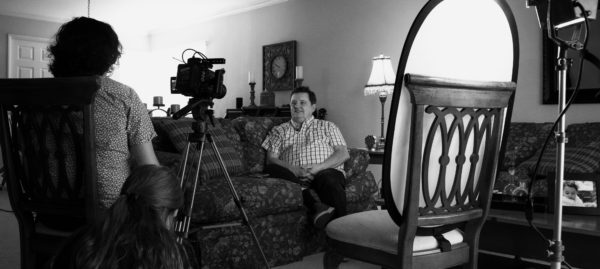
When it came to Halyx, was this something that you were aware of and got to experience or was it something that you came across in your research?
Halyx is a bit of an anomaly, bands are never really that well documented or really remembered. People don’t think about the bands that perform at the parks, even bands that are still performing at the parks today. But a lot of people do know those bands, a lot of people go specifically for those bands, especially locals. Considering the scene in Anaheim is so much more aggressive with locals, they actually do care about the bands and they know people who are in the bands.
I never got to see Halyx in person, the first time I heard about the band was through Podcast: The Ride, who themselves heard it from an undisclosed third party. Somebody who had seen the band told them about it, and this way way back when, and I was a listener, so I always knew about it. I never wanted to do a Defunctland episode on it because that’s not really what I do and on top of that, there was no information available at all. I think there were a few blog posts written by Jymn Magon, who appears in the film, that gave very basic context and some great concept art and some great photos, but it did not have enough of the story available.
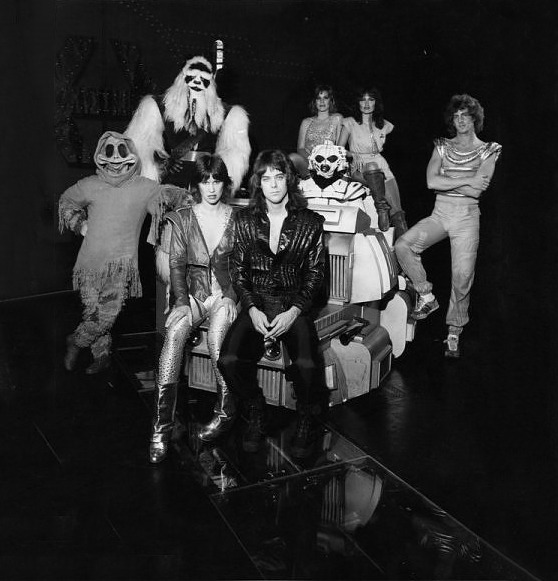
When you first heard about Halyx, was it something that you immediately wanted to research or was it an interest that grew more and more over time?
I heard about it maybe a year before we decided to actually make the film. I did not start researching it, I looked up very little about it, it was deep in the back of my brain. And then Matthew Serrano, the director of the film, released a film in December of 2018, called “Remain Seated Please” which was about Hoot and Chief, which are two theme park legends that snuck off of the ride Horizons at Epcot over and over again and filmed their adventures backstage. It was a great documentary, and a lot of people really liked it, so I reached out to Matthew and said that I would like to talk to him and maybe do something together. Through that, we talked for about a month going back and forth on ideas, and then one day I just remembered the band Halyx.
I’m a big fan of “rockumentaries” and so I was so interested in that, and what is great about Matt is that he has a crew and connections in L.A. that are very interested in doing productions, and that isn’t something that I could do from where I live in Florida. So we said we wanted to do a film about this band and its members, and we wanted to find as many of them as we could, so that’s kind of where it started. As with all documentaries of that nature, it does start to quickly evolve, or devolve, depending, and this one just kept evolving. More and more people kept coming on, I think we filmed for over a year, and Matthew did all of that himself, I was never on set, I did all my producing and creative producing remotely. Eventually, I was sent the edit, so we edited it simultaneously.
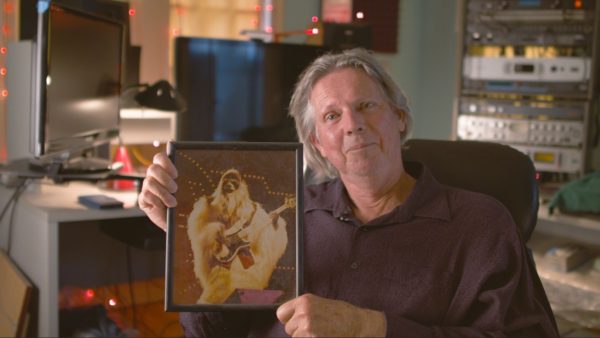
What was the process like reaching out to the band members and producers, were they open to it? They seemed to enjoy reliving the memories.
This is not my first documentary of this kind, I’ve done three or four of these kind of features before, and the game is always the same. Sometimes you get someone and they are eager to talk, sometimes you get someone who is like “Oh yeah, I’ll do it” and then sometimes you get someone who just doesn’t respond at all, very rarely do you get someone who actually says “no.” Nobody told us “no,” but the process was very gradual. We knew where to start, obviously Jymn Magon had written the article, and that had a bunch of names in there, but we found out later that a lot of the names were misspelled, and some of these people’s names are weird, like Thom Miller spells his name with an “h,” and even then, that’s not what he goes by anymore. He was one of the last people we found, and his story is so important in the film.
Some people like Bambi and Jymn Magon were very excited, very happy to speak with us. Then you had people like [Grammy and Emmy-winning composer] Mike Post, who is a great guy and was very generous and helpful, but he’s a very busy guy. We’re not making the documentary on The A Team, we’re making a documentary on something he did once. He wrote the Law and Order theme, he wrote the A Team theme, he wrote Doogie Howser, every TV theme for a while, he was the guy. So he’s busy, he’s still making stuff now and so you have to put in a lot of effort to schedule, and that was done primarily by Matthew with me doing some coaching from where I could.
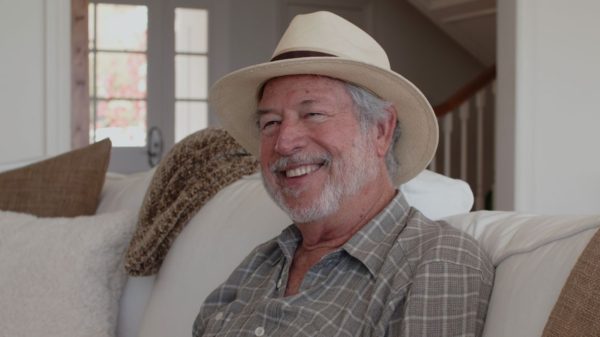
The funniest one was Gary Krisel, who is more or less the narrator of the film, the main Disney executive, we were not able to find him until after we released the film’s trailer. He saw it, and he reached out to us. There were a lot of those kinds of instances, before we started filming, we didn’t know that footage existed of the band, and now it’s used for about 60 percent of the B roll in the film. That’s what I mean by evolving. Some films devolve, I’ve been a part of a lot of projects that devolve, that’s the nature of the game. We had a lot of luck on our side throughout this production, and a lot of talent behind the camera. Matthew’s great, and so is Katie Ann O’Keefe, the cinematographer. Some of these shots are just gorgeous.
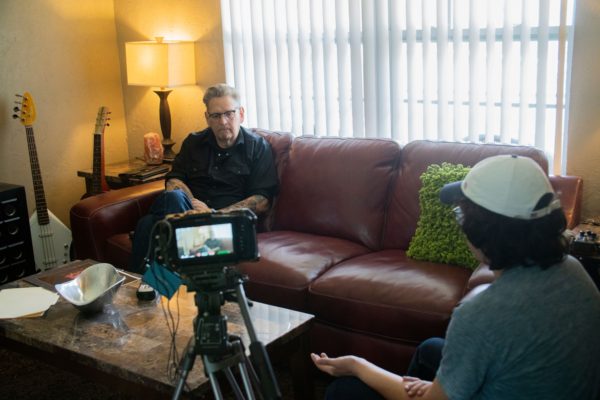
Was there a larger team behind the film than you typically work with? If so, what was the collaboration like?
With other things, I’ve worked with multiple people before, this was different. I also did a series on Jim Henson a while back, and on that series I had Nate Beagle as my audio editor and puppeteer doing live action commercials, and I worked with Daniel Becker and Kristin Beal to get the scripts ready and I worked with John Lagerholm to get some of the edits. So I’ve worked with teams on big projects like this, if you strung all those episodes together it’s like three hours long. The difference here was that Matthew was in charge of his people and I was more or less in charge of Matthew, which is a different hierarchy.
There were challenges between Matthew and I because you have someone like me who has worked in this field and done a lot of long form content whether it be Defunctland or otherwise, and someone like Matthew where this is his first feature, so there could be differences of opinions there. But more than that, you had someone, me, who at the beginning of this knew more about this specific type of medium, but also didn’t know nearly as much about what Matthew was getting, because I purposely didn’t watch the interviews before the first cut was made. Because I could come in and say “I know this, this, and this about narrative documentary and storytelling,” but I’m going to be a lot less useful if I’m in the thick of it.
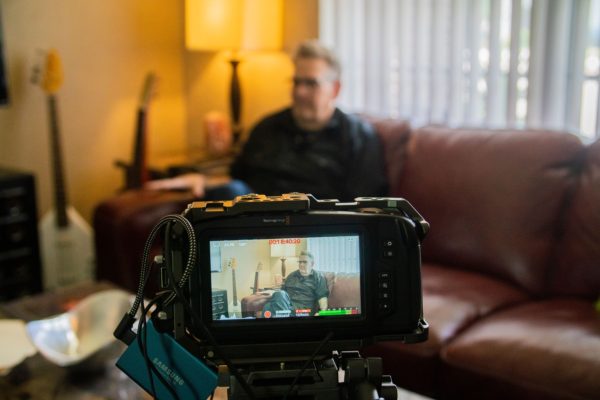
So you have Matthew, who is a very talented person and a great collaborator, and he’s very open to notes, so there were no problems on that front. He fought me on some things, and he might have been right every now and then, but we don’t need to talk about that. But you have the situation where someone is deeply invested in the film, they’re in the weeds, and they can’t see outside because they don’t even remember what’s in the film because they’ve sat through all the interviews and they’ve watched all the interviews, and read and transcribed them, he knows everything about this film, but sometimes he doesn’t know what’s in the film or outside the film because it’s just swirling in his head. So me being on the outside, I was able to say that I know what’s in the film. That’s the relationship that I think any good director and producer have. All of the conflicts and the challenges were very much in our roles, so that made it a very healthy relationship. Matthew was always focused on his artistic vision, and I was always focused on the final product, and that’s about a perfect director-producer relationship.
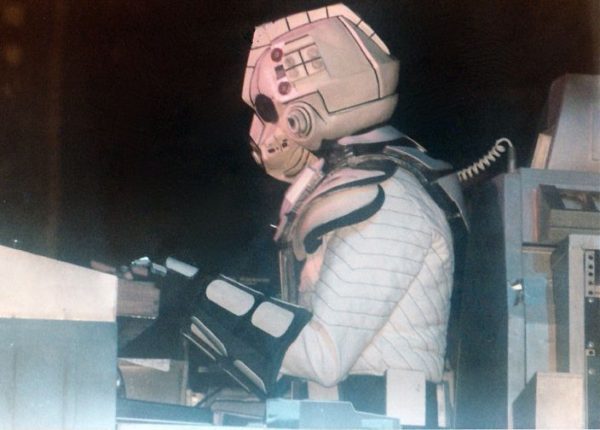
The online Disney community is very vocal, and while that may occasionally have negatives, what has your experience been like with finding a like minded audience?
The way into any fan base is knowing more than the average fan, and I straddle a few fanbases. I straddle the puppetry fanbase, which is a very welcoming fanbase for the most part, and I straddle the coaster fanbase, which, I’m sure you know, can be somewhat… hesitant to newcomers. I mean, you have an entire acronym for it [GP- General Public], which is wild, but whatever. And then I have the Disney fans, the Universal fans, the Harry Potter fans, and Pixar fans, and Nickelodeon fans, etc., and I think it’s important that whenever I come into a project, if I do have something to say artistically or opinion-wise, I have to know my stuff.
I did make mistakes early on, where I didn’t know enough to be talking the way I did as far as my opinion, and people in the fan base can tell when your opinion is not researched. But now, I’m not really afraid of the Disney community because they are not the most research-heavy people in the world, that’s not their thing. The coaster community is very research-heavy though, so whenever I’m doing a coaster video, you can bet that I’m going to send it to somebody, because people that are into coasters are so much about stats and figures and facts, because there’s nothing else to talk about, meaning it’s just a big blue steel structure, but with Disney, there’s a character and a story and there’s other stuff to talk about.
So I come in with research, and I try to make sure that everything I say is well researched and new. And also not putting down anything, just because it’s not your thing, and that’s something that I’ve learned through trial and error. Every once and a while I do label a video “The Failure of…” or “The Worst…” I have to make sure that it is a failure or that it is the worst. Like the worst Six Flags coaster, you’re going to be hard pressed to find one worse than Green Lantern: First Flight. The other thing would be that you don’t present something as if it’s something you found unless you actually found it. I see this a lot with people, where they say “Look what I found,” and it’s something I’ve seen a billion times, like the Splash Mountain rap, or old Jim Henson commercials, or they’ll say, “Look at this coaster,” and it’s Gatekeeper at Cedar Point, something that everybody knows. They’re like, “Can you believe this?!” and you’re like, “Yeah, I know, I see it every day.” That immediately puts people off. So when you have a project like Halyx, this is really simple to market because nobody knows we’ve done until they watch the movie, because this information does not exist.
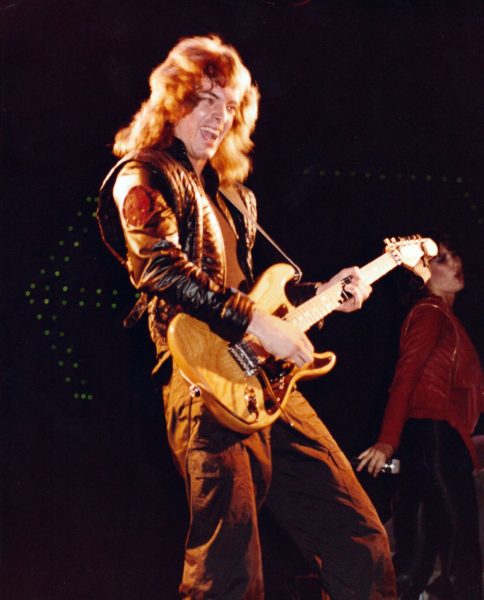
Is it rewarding to have the receptive part of the audience be very happy to have these stories? That must be something you’re very proud of.
Oh, absolutely. Everything I do is generally well received, but certain things Defunctland does are very in-depth retrospectives, I don’t think I broke any news on the World’s Fair, you could have found that information, because I found that information. But a project like Halyx is more about giving back to the community in a way. So much of my research is based on the work of historians, writers, journalists and bloggers from the past century, but this information [in the documentary] would have passed with the people that told it for lack of a better phrase.
These stories and this information, it’s all new, and if Matthew and I and the whole crew not done the work, this stuff would have never been documented. So it is gratifying to, after doing so many episodes of conglomeration and hard-to-find, yet available facts, no matter how high quality and produced it is, it’s nice to go from that to facts that you’ve never heard because they had never been uttered until we asked. That’s a totally new way of going about things, and it is satisfying in that aspect.
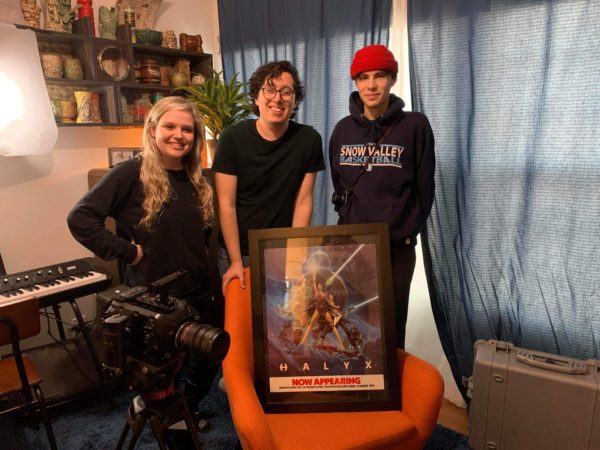
Is there anything else you’d like to discuss that we didn’t talk about?
I could go on and on about the production of this film, but something that might be interesting is how many edits this has gone through. I got the first edit in November, so I think there’s been about fifty cuts of this film. If we went back and sat down to watch the first cut, it’s almost unrecognizable, in a good way. It’s come so far, and Matthew has put in so much time, he’s been so great, and so has his team. All of the score in the film is original, we had two composers who did great work, and like I said, the cinematography is beautiful, which is Katie Ann’s work.
When you look at the behind the scenes photos from this, everything looks like it’s a professional mixing studio, but it’s not, it’s just very well done. Everybody put in stellar work, and when you have so many team members putting in so much creativity and heart and good ideas, it’s not an accident that the film came out being good. I am extremely proud of this film, I’ve watched it an ungodly amount of times, we’ve exported it probably a hundred times in the past two weeks, but I still love to watch this film. There was a point where I didn’t watch it for a month, just because other things were happening in production, and I thought “I want to watch this movie again.” So I’m super proud of it, and that’s Matthew’s work. I produce stuff all the time. This is a movie, and I make TV, that’s how I look at it. The Defunctland series, that’s TV. It’s very fast paced, very “fly by the seat of your pants,” and this film was very down to the frame, focused on making it the best we can, it’s a totally different speed. It’s higher stakes, takes more time, and has a bigger budget. So hats off to Matthew and to all of our contributors on Indiegogo. Like I said, I’m really proud of everybody’s work, and I hope people like the film!
“Live from the Space Stage: A Halyx Story” releases on Thursday, August 20th, and will be available to watch for free on the Defunctland YouTube channel.
Have you ever heard of Halyx? If so, let us know in the comments, and make sure to watch the film when it comes out on Thursday.


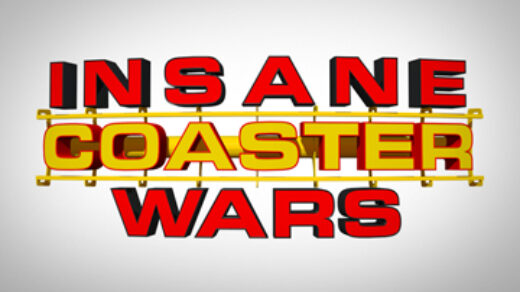












Recent Discussion